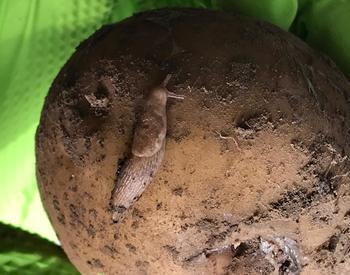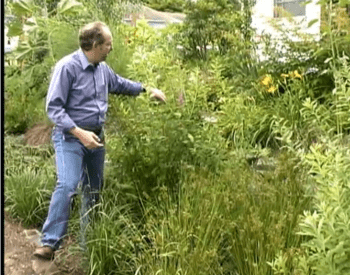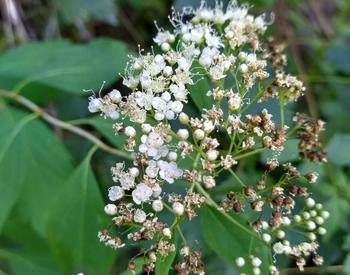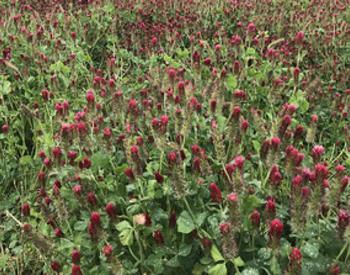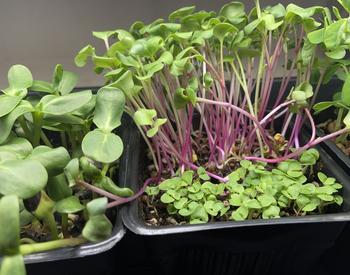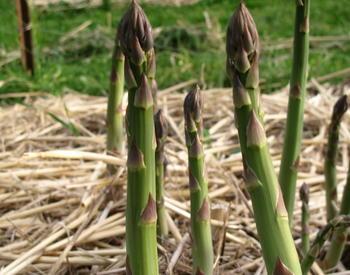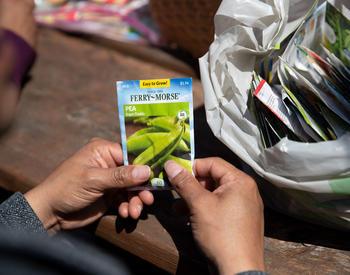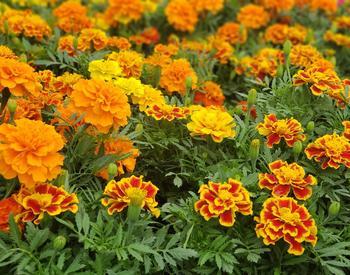Abundant warm, sunny days during the spring in the Klamath Basin often lure uninitiated local gardeners into a trap that more seasoned gardeners avoid: planting without a protection plan. Days growing consistently warmer and longer often prompt significant planting. However, nights are still cool — and heavy frosts are not unusual even in June. The trap of planting tender annuals and vegetables is easy to fall into — and causes disappointment later if appropriate precautions aren’t taken.
An important habit for Klamath gardeners is to watch weather carefully, always prepared to throw frost cloth, blankets, or other protection around tender plants at any time of year. This preparation enables us to take advantage of as much of the growing season as possible, losing fewer plants to cold damage or frost.
Some annual favorites, like coleus and celosia, are always going to be tender, and just don’t tolerate frost — these are best suited to containers, whisked into the garage before a cold night. Other plants are better suited to cold nights, outperforming more tender options without as much extra work. Following are five options for annual flower color well suited to sunny days and cool nights.
Petunia
Available in many colors and patterns, petunias are an old-time favorite that remains popular both for in-ground and hanging-basket color.
Petunias will not tolerate a freeze, but they handle temperatures in the 40s easily. Keep spent flower heads pinched off the plant to encourage lots more flowers and color.
Pansy
Another favorite that comes in numerous color and pattern combos, pansies are dependable bloomers that thrive in cooler weather. They’ll stop blooming in the summer, but the vegetative part of the plant will often remain to bloom again in the fall. Pansies are relatively heavy feeders and will respond to fertilizer with more blooms. Most pansies grow 6–8 inches tall.
Snapdragons
Fragrant, colorful and long-lasting as cut flowers, snapdragons are another flower that may look sad as summer heat sets in, then flush out with a second series of blooms in fall — especially if cut back in late summer. Snapdragons come very short (i.e., ‘Magic Carpet’ series, 7–8 inches), and super tall (for instance, ‘Rocket’ series, 30–36 inches). Thus, this plant can be used at either the front of the garden bed as ground cover, or in the back as a cut flower, depending on which cultivar is selected.
Dianthus
The name “Dianthus” serves as both the genus name and common name of a wide variety of fragrant plants related to carnations. There are also perennial Dianthus.
Also known as “sweet william,” “pinks” and in older texts, “gillyflower,” Dianthus flowers are long-lasting and come in a variety of pink, red, white and lavender colors. Most flower petals have fringed or “pinked” edges. Most Dianthus has short foliage that hugs the ground, making it less palatable to deer.
Osteospermum
Also known as African daisy, drought-tolerant Osterspermum is newer to the garden center scene and comes in strangely vibrant colors from purple to maroon to bright orange. Flowers bloom on stalks 1–3 feet tall, bloom heavily in spring, rest during the heat of summer and bloom again in fall. Many Osteospermum flowers are bicolored and can tolerate some shade.
One of the challenges of Klamath gardening is the large spread between daily high and low temperatures, frequently more than 40 degrees, causing significant stress to many plants. Often, the plants don’t have specific symptoms but just do not thrive — causing gardeners to wonder what they are doing wrong.
Choosing plants that can tolerate our environment is one way to achieve more success. Paying close attention to our weather patterns can:
- Help us plan for cold and intervene to avoid cold stress.
- Increase awareness of wide swings in daily temperatures that cause more subtle stresses in our plants.
With more experience in our individual garden situations, we become aware of microclimates (rock walls, wind blocks, geothermic soil) that inform the best places to try desired plants that are not ideally suited to our climate.

